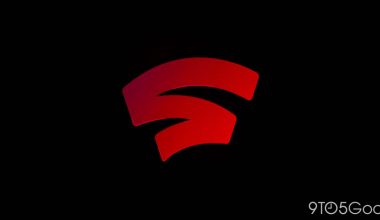With its Ryzen 9 7950X, which was the fastest consumer-oriented processor in the world for the few weeks prior to this review, AMD was able to wrest control of the processor performance crown from Intel. Unfortunately for AMD, Intel is always moving forward. Intel has reclaimed the top spot with the introduction of the 13th Generation “Raptor Lake” Core i9-13900K.
The Core i9-13900K from Intel follows a strategy that is very different from AMD’s upcoming Zen 4 processors. While Intel’s Raptor Lake design is an improvement over the Alder Lake that came before it, AMD’s Zen 4 design represents a significant shift from its Zen 3 architecture. Intel is packing on cores while AMD is pushing performance and efficiency with less. Even said, there are still areas where the new Core i9 falls short, particularly in terms of heat and power consumption. The $589 Core i9-13900K, however, is without a doubt the greatest CPU you can buy if getting the quickest performance possible is your main goal, earning it our Editors’ Choice award.
Our evaluations are reliable.
In a new window, click here
In a new window, please. Design: A Larger Alder Lake Alder Lake, the brand name for Intel’s 12th Gen CPU series, represented a fundamental shift in the way the corporation constructs its chips. With Alder Lake, Intel basically adopted Arm’s big.LITTLE design ethos. Historically, Intel has only used a single CPU architecture. High-end Alder Lake processors have P-Cores, which are high-performance CPU cores, and E-Cores, which are smaller, more energy-efficient cores.
(Image courtesy of Michael Justin Allen Sexton) This design’s main idea is to use the P-Cores for performance-hungry workloads and the E-Cores for low-priority, low-performance jobs to increase energy efficiency. However, since all of the cores can be used simultaneously, that is by no means the only advantage of this design.
COMPARED PRODUCTS (Opens in a new window)
4.0 Outstanding (Opens in a new window)
(Image courtesy of Michael Justin Allen Sexton) The additional E-Cores, which were simply absent from 11th Gen CPUs, significantly increase each processor’s performance. Even though not all Alder Lake processors have E-Cores, and while those that do don’t have as much power as their P-Core equivalents, those that do are noticeably faster due to their greater overall core count.
(Image courtesy of Michael Justin Allen Sexton) In the end, there aren’t many differences between Alder Lake in 2021 and Raptor Lake in 2022, therefore it was crucial to discuss Alder Lake first. Although Intel made a few minor tweaks behind the scenes, the increase in core count is by far the most noticeable adjustment. The new Core i9-13900K features eight P-Cores and 16 E-Cores, compared to the Alder Lake Core i9-12900eight K’s P-Cores and eight E-Cores.
(Image courtesy of Michael Justin Allen Sexton) The Core i9-13900K now has 32MB of L2 cache and 36MB of L3 cache thanks to an increase in capacity by Intel. The L3 cache pool of the Core i9-12900K is just 30MB smaller, however the L2 cache is much less at only 14MB. Both types of processor cores’ clock rates have increased, with the Core i9-13900P-Cores K’s working 600MHz faster than the Core i9-12900P-Cores K’s and the Core i9-13900E-Cores K’s operating 400MHz faster.
(Image courtesy of Michael Justin Allen Sexton) Not to mention, on Raptor Lake, the maximum supported memory speed has increased from 5,600MHz to 5,800MHz from Alder Lake.
In terms of overall architecture, Raptor Lake certainly does not differ significantly from Alder Lake. Raptor Lake’s performance improvements come primarily from running more quickly and having more cores and cache available to accomplish the work.
(Image courtesy of Michael Justin Allen Sexton) This is a really effective approach to increase performance if done correctly, as you probably assume and will soon see, and Intel has definitely succeeded to do it that way. Power is one final crucial factor that affects this that we haven’t discussed up to now.
A processor will run hotter the more power it consumes, which can lead to a variety of performance issues. Simply put, if the CPU is constantly overheating and consuming significantly more power, adding additional cores won’t make much of a difference.
(Image courtesy of Michael Justin Allen Sexton) Given the increase in resources, it is somewhat surprising that the Core i9-13900K is not significantly more power-hungry than its predecessor. Although the processor uses more power and clearly gets hotter than we’d like, nothing of these issues prevents it from exceeding any other chip in our charts.
The integrated graphics processor (IGP) in the Core i9-13900K is the same as the one in several Alder Lake CPUs, including the Core i9-12900K. The Core i9-13900Intel K’s UHD Graphics 770, which has 32 execution units (EUs) and runs at 1.65GHz, is 100MHz faster than the Core i9-12900K.
CHIPSET Z790 Existing Alder Lake motherboards will work just fine with Raptor Lake processors, but Intel also introduced a new Z790 chipset for Raptor Lake.
In comparison to Z690, the Z790 chipset can support eight more PCI-E 4.0 lanes and an extra USB 3.2 Gen 2×2 connector. The built-in Wi-Fi controller for the chipset is now also based on an Intel Killer Wi-Fi 6E architecture.
STUDY SETUP On a motherboard model Gigabyte Z790 Aorus Master (Opens in a new window) with two 16GB sticks of DDR5 memory set up in dual channels, we tested the Core i9-13900K processor. The greatest memory speed that the Core i9-13900K officially supports for this RAM was 5,600MHz. Using their respective supported maximums, other tested CPUs ran the RAM at slower speeds.
(Image courtesy of Michael Justin Allen Sexton) The chip was kept from overheating with the help of an Cooler Master MasterLiquid PL240 Flux (Opens in a new window) 240mm water cooler. Power was provided by an SilverStone DA850 (Opens in a new window) PSU, and Windows 11 was used for all testing. All of the parts were held throughout testing on an outdoor Praxis Wetbench.
We used an Nvidia GeForce RTX 3080 Founders Edition for the video game testing. This served as the system’s display adapter for all CPU and power testing. Only when the CPU’s integrated graphics were being tested was the card taken out.
CPU PERFORMANCE OF THE CORE I9-13900K The memory and cache bandwidth test in AIDA64 is a valuable tool for evaluating CPU performance. To maximize performance and avoid stalls, a processor must be fed with data, but these numbers must be carefully evaluated. The way a processor reacts to changes in cache size and memory bandwidth varies depending on the processor design.
The Core i9-13900K has the best memory bandwidth of all the chips we tested because it supports faster memory speeds. The processor’s L1 cache bandwidth was also excellent, far superior to that of the Core i9-12900K. However, the Core i9-13900L2 K’s cache performance was subpar and fell short of AMD’s Ryzen 9 7950X.
The Core i9-13900K was able to exceed all of the rival CPUs in our charts in almost all tests when it came to pure CPU performance. In other tests, AMD’s Ryzen 9 7950X nearly caught up to the Core i9-13900K and even managed to edge it out for a narrow victory in Adobe Premiere Pro. But when it comes to sheer CPU performance, the Core i9-13900K is without a doubt the superior chip.
PERFORMANCE OF THE CORE I9-13900K FOR GAMING The Core i9-13900K doesn’t really distinguish out from the crowd in games because there are many more factors at play. Given that the Core i9-12900K shouldn’t be faster in that test, we should point up that there is probably a bug causing our 3DMark test results to be inaccurate. However, the remaining test results make more sense.
The Core i9-13900K likely earned its best victory in terms of gaming with F1 22, posting significant performance advantages across all tested resolutions. It roughly tied for top place with a few other chips in Marvel’s Guardians of the Galaxy. A few chips, such as the AMD Ryzen 9 7950X and the three tested Alder Lake chips, performed marginally better at 1080p in Total War: Three Kingdoms.
The Core i9-13900K performed unexpectedly well in our two legacy game tests, coming out on top in Bioshock: Infinite at all resolutions and Tomb Raider at 1080p with a slight advantage.
PERFORMANCE OF THE CORE I9-13900K INTEGRATED GRAPHICS The IGP in the Core i9-13900K is identical to that in many Alder Lake chips, as was already mentioned, with the exception that it is significantly faster. Since GPUs are often considerably more sensitive to changes in memory and bandwidth than processors, it is likely to profit in some way from the quicker RAM.
In general, when testing the IGP, we observed what was to be anticipated given the information above. In three of our four tests, the Core i9-13900K with Intel UHD 770 Graphics IGP delivered the greatest results and marginally outperformed the older Alder Lake processors. The sole exception was Tomb Raider, when the Core i9-13900K ran noticeably slower. This was probably caused by the IGP throttling under increased processing demand.
POWER CONSUMPTION AND THERMALS FOR THE CORE I9-13900K Using a Kill-A-Watt power meter, we gauge the system’s overall power usage. Because the CPU is the primary component being altered, the majority of any variation seen in the charts below may be attributed to the processor. As a result, our data represent power usage from all components, not just the CPU.
In this test, the Core i9-13900K system consumed more power than any other processor we have examined so yet. The chip was also quite warm throughout the testing, regularly reaching 100 degrees Celsius (212 degrees Fahrenheit), the highest temperature among these CPUs and also the chip’s officially recommended safe operating temperature. Even while the AMD Ryzen 9 7950X appears to have better energy efficiency, we can’t really fault the Core i9-13900K for its high running temperature.
The safe maximum operating temperatures for AMD’s Ryzen 9 7950X and Ryzen 7 7700X are 95 degrees Celsius (203 degrees Fahrenheit), and both of these chips will throttle if these temperatures are exceeded. Both the Core i9-12900K and Core i9-13900K from Intel are capable of performing this, however at a higher temperature. This effectively means that if it weren’t for the built-in safety features stopping them from melting, all of these chips would really run significantly hotter. As a result, we are unable to determine which of these chips would operate at maximum temperature if left unchecked.
(Image courtesy of Michael Justin Allen Sexton) Given that we used a 240mm water cooler and were still able to max out the system, we can say with certainty that you should have one for any of these chips. Given that we had already hit the upper limit of our cooling, we decided against trying to overclock.
THE MOST POWERFUL (AND POWER-HUNGRY) PROCESSOR TO DATE, IN VERDICT With the fastest consumer-oriented CPU you can buy and the greatest CPU test results we’ve ever seen, Intel’s Core i9-13900K is the winner of our Editors’ Choice award. Does that imply that you should use it? Depending on what else you’re taking into account.
The chips fared comparably in numerous tests when compared to the AMD Ryzen 9 7950X, but the Core i9-13900K is unquestionably the superior option. Why? because the Ryzen 9 7950X costs $699 while the cheaper model costs $589.
There are many alternative options available if you’re looking for a computer primarily for gaming, as the Core i9-13900K doesn’t really provide much more performance than, for example, the Core i5-12600K, the Ryzen 7 7700X, or even the Ryzen 7 5700X. If you’re on a tight budget, it’s probably best to choose one of these less expensive CPUs and use the money you save to upgrade your graphics card. If you own a compact form factor, mini-ITX PC, this is also our suggestion to you.
Last but not least, whether you choose to upgrade to the Core i9-13900K relies on on the software you’re already using. Realistically, the Core i9-13900K offers significantly more performance than even comparable Core i5-12600K or Core i9-11900K processors. The Core i9-13900K could be a great upgrade for a PC with an 11th Gen or older processor or an Alder Lake CPU of lower performance.
Editors’ Selection
Pros Outstanding performance affordable price a lot of cores Games that use integrated graphics See More Negatives heats up. the conclusion The fastest CPU available is Intel’s ‘Raptor Lake’ Core i9-13900K, which outperforms the competition and has more cores.
APPRECIATE WHAT YOU JUST READ? Sign up for Lab Report to receive the most recent reviews and expert product advice in your inbox.
Advertisements, discounts, and affiliate links could be found in this newsletter. You agree to our Terms of Use and Privacy Policy by subscribing to a newsletter. You are always free to unsubscribe from the newsletters.







